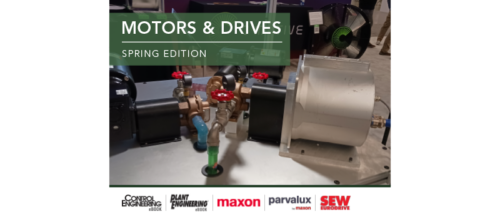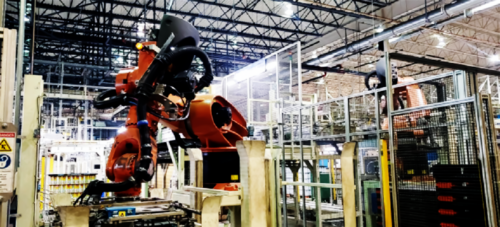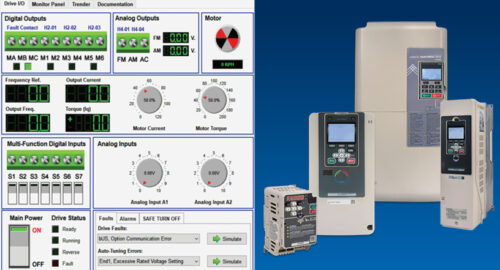Reducing downtime with variable speed drives
Inverter drives are getting smarter and are now able to look after themselves, along with a range of other plant equipment such as fans, pumps, motors and conveyors.
Variable speed drives (VSDs) have always been able to monitor parameters such as motor current and output torque to provide an early warning of impending problems with rotating plant equipment and machinery. Today’s VSD displays and connectivity to human-machine interfaces (HMIs) means error codes are presented with meaningful troubleshooting information, so engineers no longer have to look through paper manuals to diagnose and rectify a fault.
Going beyond routine fault codes today’s technology can offer significant advances in plant monitoring and diagnostics, taking the uncertainty out of maintenance and reducing unscheduled downtimes. In particular VSDs now play a key role in moving from a regime of preventative maintenance to one of more cost-effective predictive maintenance.
Reducing unplanned downtime
The intelligent functionality of modern VSDs offers all the tools needed to reduce unplanned downtime, detect problems in bearings, motors, pumps, fans and conveyors – as well as in the drives themselves – before they cause a failure. With early warnings of impending failure and pro-active requests for servicing, it is possible for engineering teams to make informed decisions about when to schedule maintenance.
Consider a drive controlling the motor on a conveyor line. Unscheduled stoppages on conveyors that then halt the whole production line can be devastating. However, many of the typical problems that will halt a conveyor line are easy to detect from within the drive. Common issues such as worn bearings, for example, cause friction and can be detected by a higher output current that is needed to overcome the increased load. Conversely, a decrease in load – suggestive of wear in drive belts – can also be detected.
Such diagnostics are simple to set up, requiring minimal adjustment to parameters. Different levels of monitoring and alarms can be defined to meet individual requirements, with local display on the drive itself or an HMI, or remote monitoring over a network. In the conveyor example, all that needs to be defined are upper and lower limits for motor output current and the maintenance team will receive timely warnings of bearing or belt wear.
In fan and pump applications, the relationship between speed and torque can be indicative of impending problems. These characteristics start to trend away from the norm due to wear as a component approaches the end of its service life. It can also reveal problems such as blocked filters and pipes. Again, warnings about issues before they impact on efficiency of operation gives engineers the best possible opportunity to schedule maintenance at the most convenient time.
Monitoring efficiency
Some VSDs use sophisticated algorithms to monitor fan efficiency, pump curves and performance, offering dedicated diagnostics functions for the likes of fan and pump applications. Some drives, for example, offer a cleaning function, which provides warning of the build-up of dirt and foreign matter on the impellers of fans and pumps. Left unchecked, this build up will eventually stop the fan or pump motor completely and need an engineer to access the equipment to clean it, however, the drive is capable of running routines that solve the problem, not just highlight it.
With the cleaning function, repeating forward/reverse rotation and stopping the motor, eliminating extended downtime, can remove this dirt buildup. The function can be enabled manually on the display of an alarm or can be started automatically when an overload is detected. If the process clears the problem, the load characteristics return to normal and operation can continue. If the problem isn’t cleared, an alarm can be triggered to alert the maintenance team, again giving them time to deal with the issue as and when is convenient, before equipment failure.
It is possible to extend those diagnostics capabilities further, bringing predictive maintenance in line with the digitization of manufacturing, aligning it with the goals of Industrie 4.0.
This integrated approach to monitoring the health of individual assets combines local traffic-light indication of the asset through red, amber and green status lights on the installed sensor with more detailed analysis performed by the drive. Within the VSD, operating temperature and vibration feedback from the sensor is combined with the monitoring of a full range of other external parameters, including speed, voltage and current information, with detailed diagnoses highlighted on the drive’s integrated display.
In the event of a change of state that indicates a deterioration of operating conditions or a likely impending failure, the system will display practical recommended measures to take locally via clear text messages or by forwarding them to higher-level systems. This means maintenance personnel do not always need special experience or diagnostics expertise to be able to identify faults directly, take the necessary measures and schedule maintenance work as required.
As a result, downtime is minimized and system availability maximized – which in turn leads to further cost reductions. The net result is that system maintenance for critical assets can be planned in advance, resulting in a longer service life.
Wayne Turtill, product manager for drives and servos at Mitsubishi Electric. Edited by Chris Vavra, production editor, Control Engineering, cvavra@cfemedia.com. This article originally appeared on the Control Engineering Europe website.
Do you have experience and expertise with the topics mentioned in this content? You should consider contributing to our CFE Media editorial team and getting the recognition you and your company deserve. Click here to start this process.





